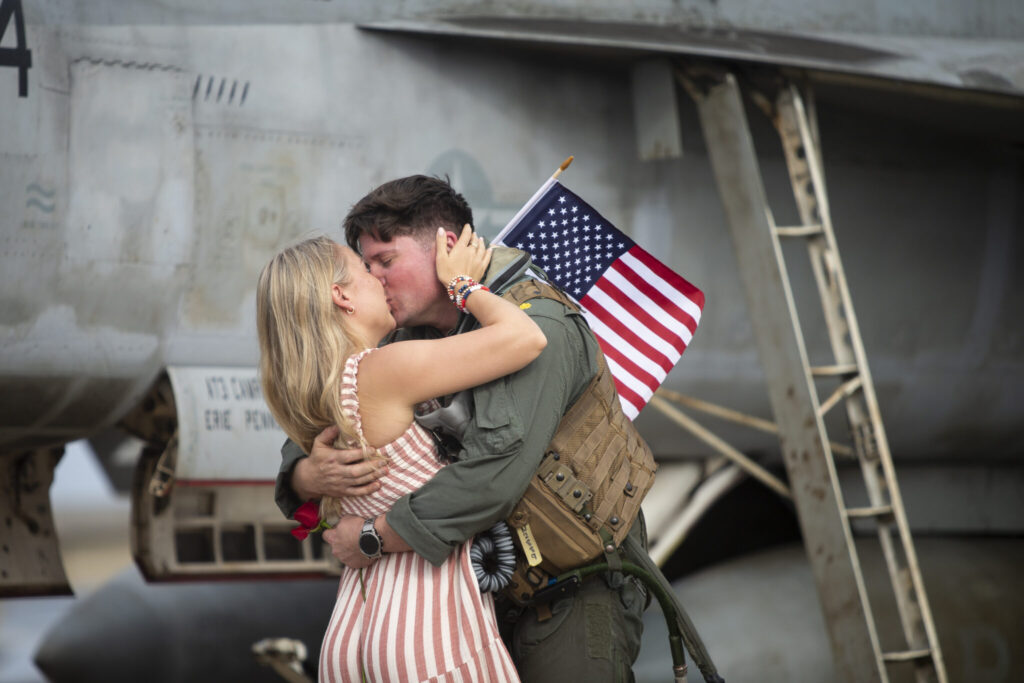U.S. Navy fighter pilots came home to Virginia feeling relieved Friday after months of shooting down Houthi-launched missiles and drones off Yemen’s coast in the most intense running sea battle the Navy has faced since World War II. F/A-18 Super Hornets swooped over waiting families in a low formation before landing at their base in Virginia Beach. Dressed in green flight suits, the aviators embraced women in summer dresses and kids carrying American flags. Some handed red roses to their wives and daughters. “We’re going to go sit down on the couch, and we’re going to try and make up for nine months of lost time,” Cmdr. Jaime Moreno said while hugging his two young daughters, ages 2 and 4, and kissing his wife Lynn.
Quick Read
- U.S. Navy fighter pilots returned home to Virginia on Friday after months of intense operations, shooting down Houthi-launched missiles and drones off Yemen’s coast.
- The USS Dwight D. Eisenhower aircraft carrier strike group protected merchant vessels and allied warships in a crucial Red Sea corridor leading to the Suez Canal and the Mediterranean.
- The Iran-backed Houthi rebels in Yemen have been targeting ships linked to Israel, the U.S., or Britain, claiming to support Hamas in its war against Israel, though often targeting unrelated ships.
- U.S. Navy sailors faced significant threats, including seeing incoming missiles seconds before destruction by defensive systems, prompting discussions on providing them with counseling and PTSD treatment.
- The deployment, initially expected to involve exercises with NATO countries, turned into a combat mission following Hamas’ attack on Israel on Oct. 7, extending the mission twice.
- The return of the sailors was an emotional reunion with their families in Virginia Beach, highlighting the stress and resilience experienced during the nine-month deployment.
The Associated Press has the story:
US Navy pilots come home after months of shooting down Houthi missiles & drones
Newslooks- VIRGINIA BEACH, Va. (AP) —
U.S. Navy fighter pilots came home to Virginia feeling relieved Friday after months of shooting down Houthi-launched missiles and drones off Yemen’s coast in the most intense running sea battle the Navy has faced since World War II.
F/A-18 Super Hornets swooped over waiting families in a low formation before landing at their base in Virginia Beach. Dressed in green flight suits, the aviators embraced women in summer dresses and kids carrying American flags. Some handed red roses to their wives and daughters. “We’re going to go sit down on the couch, and we’re going to try and make up for nine months of lost time,” Cmdr. Jaime Moreno said while hugging his two young daughters, ages 2 and 4, and kissing his wife Lynn.
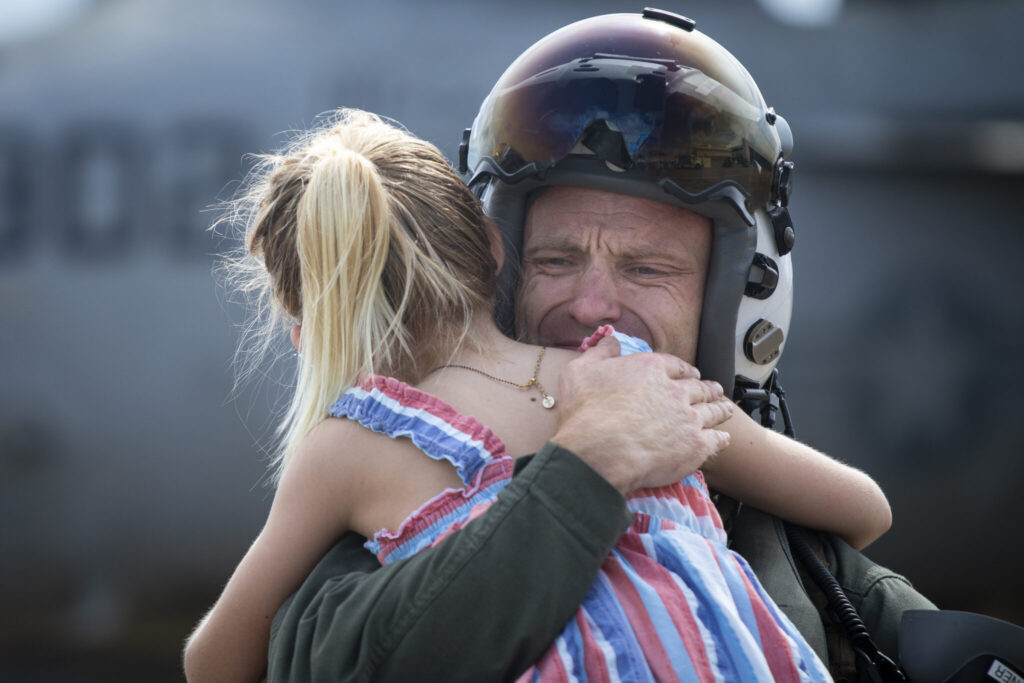
Clearing the emotion from his voice, Moreno said he couldn’t be prouder of his team and “everything that the last nine months have entailed.” The USS Dwight D. Eisenhower aircraft carrier strike group, which includes three other warships, was protecting merchant vessels and allied warships under fire in a vital Red Sea corridor that leads to the Suez Canal and into the Mediterranean.
Iran-backed Houthi rebels in Yemen have been attacking ships linked to Israel, the United States or Britain in what they say is a campaign to support the militant group Hamas in its war the Gaza against Israel, though they frequently have targeted ships with no clear links to Israel or its supporters, imperiling shipping in a key route for global trade.
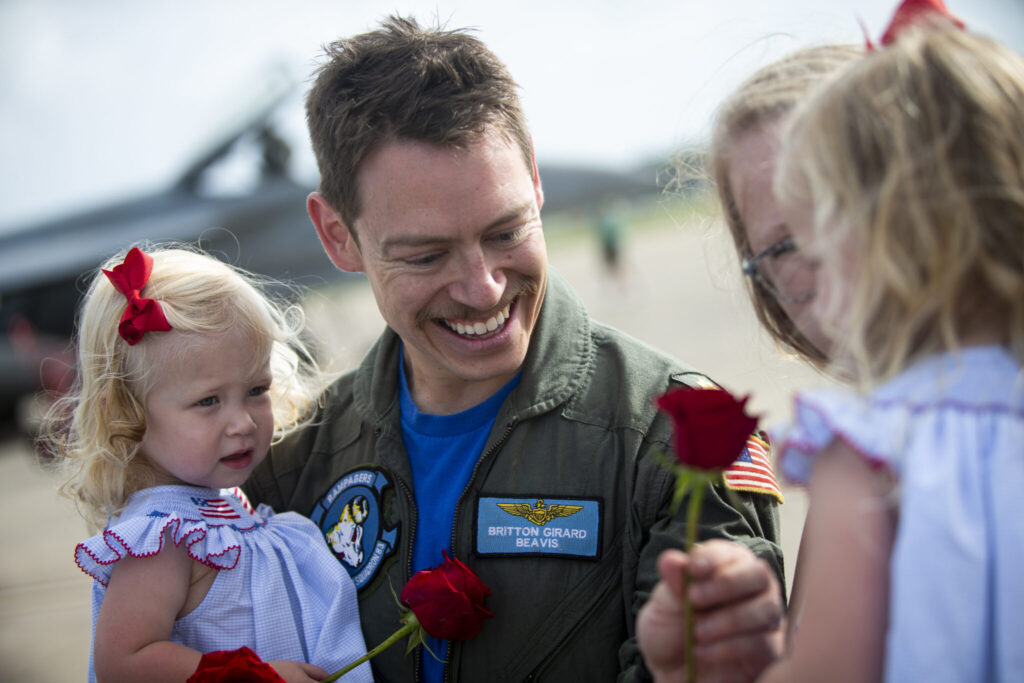
The U.S. and its allies have been fighting back: One round of fire in January saw F/A-18s from the Eisenhower and other ships shoot down 18 drones, two anti-ship cruise missiles and a ballistic missile launched by the Houthis.
U.S. Navy sailors have seen incoming Houthi-launched missiles seconds before they are destroyed by their ship’s defensive systems. Officials in the Pentagon have been talking about how to care for the sailors when they return home, including counseling and treatment for possible post-traumatic stress.
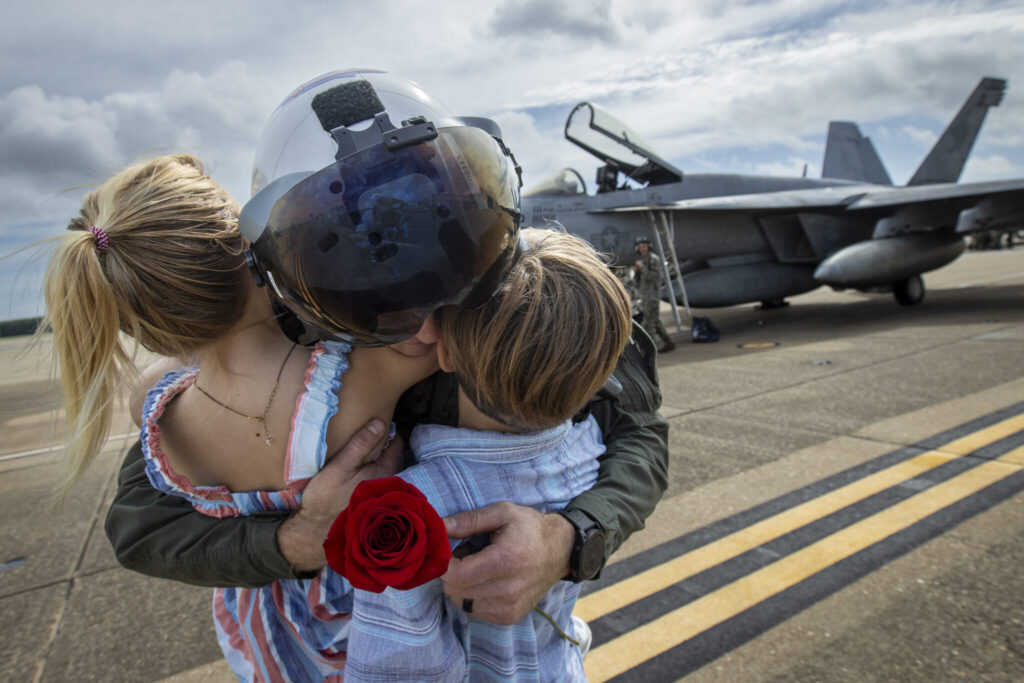
Cmdr. Benjamin Orloff, a Navy pilot, told reporters in Virginia Beach on Friday that most of the sailors, including him, weren’t used to being fired on given the nation’s previous military engagements in recent decades.
“It was incredibly different,” Orloff said. “And I’ll be honest, it was a little traumatizing for the group. It’s something that we don’t think about a lot until you’re presented with it.” But at the same time, Orloff said sailors responded with grit and resilience.
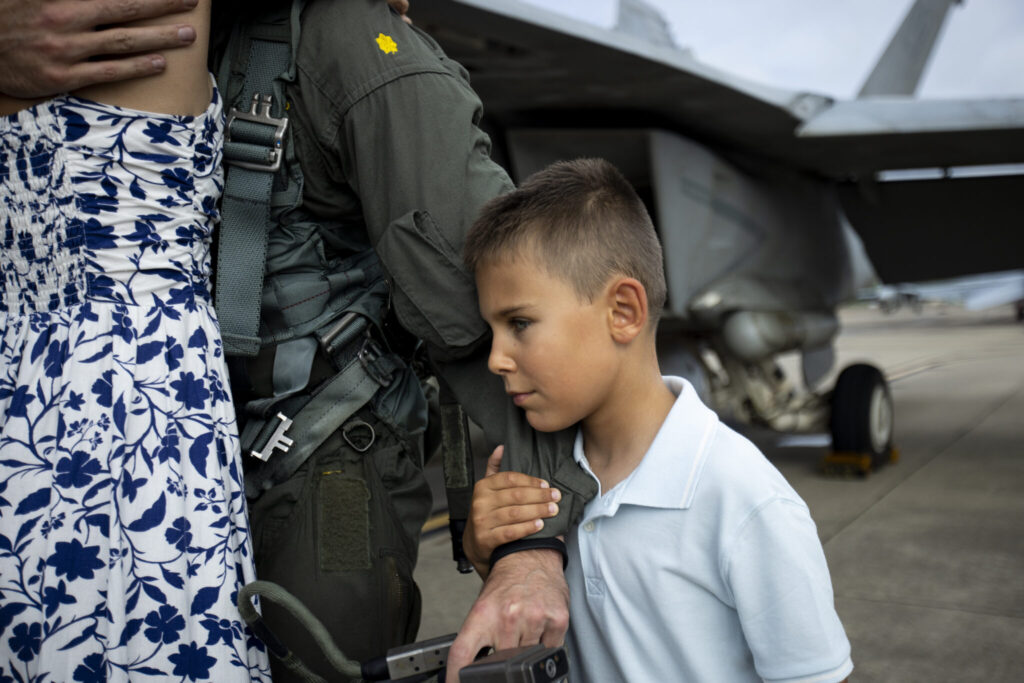
“What’s impressive is how all those sailors turned right around —- and given the threat, given that stress —- continued to do their jobs beyond reproach,” Orloff said, adding that it was “one of the most rewarding experiences of my life.”
The carrier strike group had left Virginia in mid-October. Its deployment was extended twice because of the importance of having a powerful carrier strike group, which can launch fighter jets at a moment’s notice, in the volatile region.
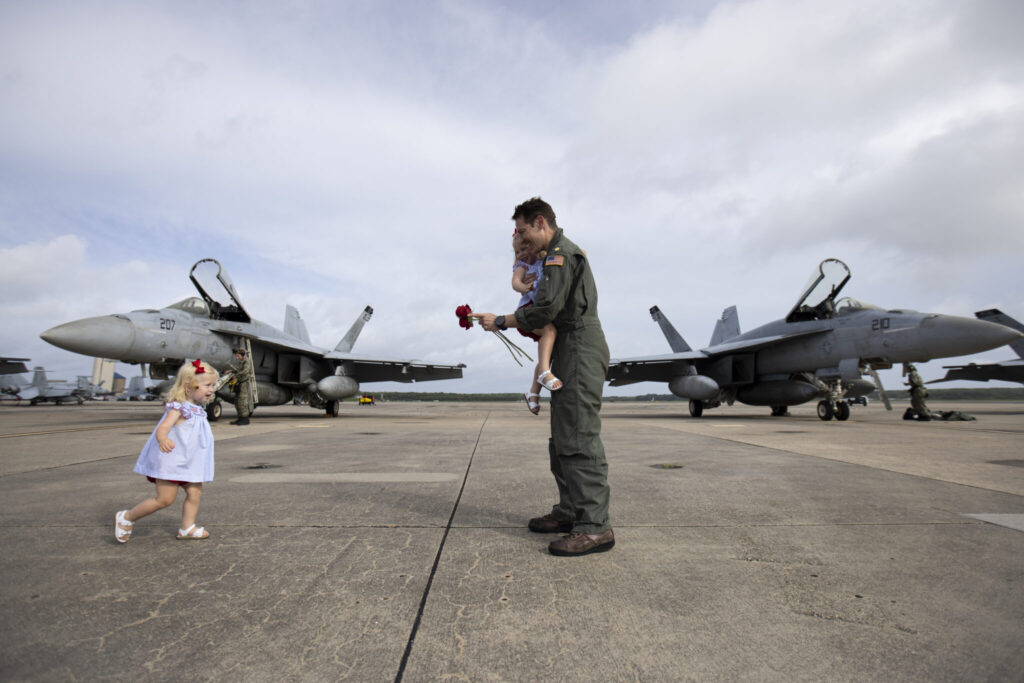
The months of fighting and extensions placed extra stress on roughly 7,000 sailors and their families. Caitlyn Jeronimus, whose husband Keith is a Navy lieutenant commander and pilot, said she initially thought this deployment would be relatively easy, involving some exercises with other NATO countries. But then Hamas attacked Israel on Oct. 7, and plans changed. “It was going to be, if you could call it, a fun deployment where he’s going to get lots of ports to visit,” Jeronimus said.
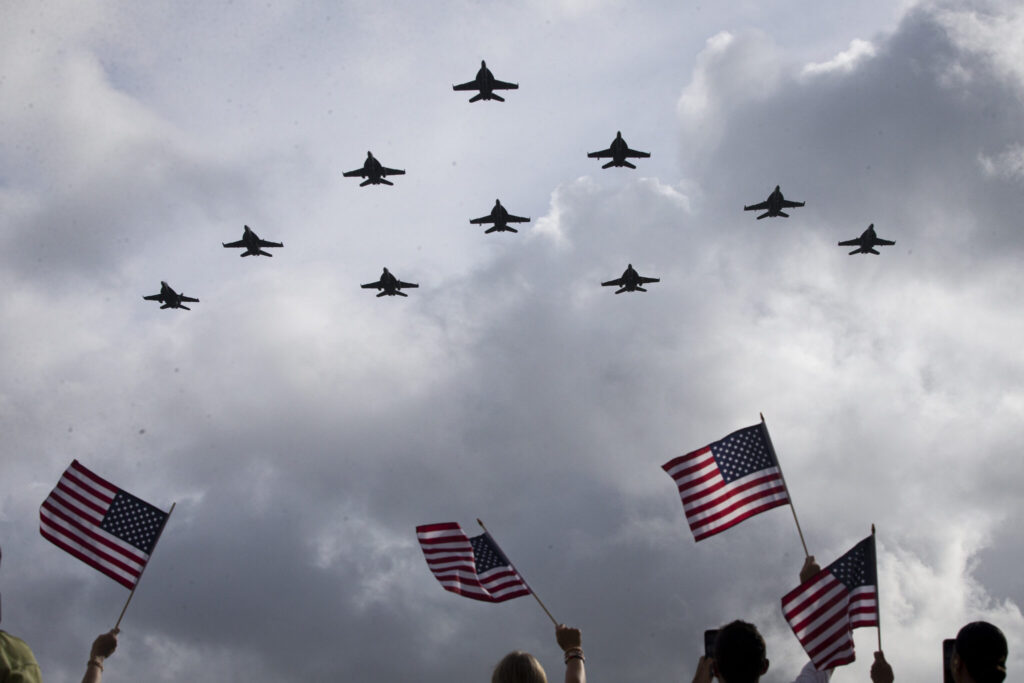
She said the Eisenhower’s plans continued to change, which was exacerbated by the knowledge that there were “people who want to harm the ship.” Jeronimus leaned on counselors provided by the Navy. Her two children, aged 5 and 8, were old enough to understand “that daddy has been gone for a long time,” she said. “It was stressful.”

